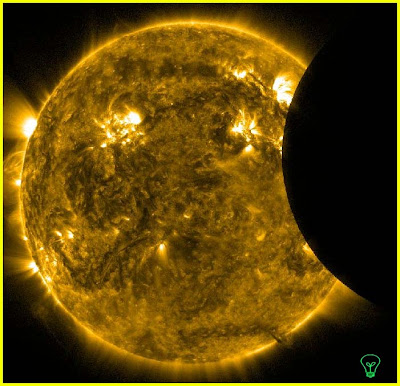After its first day on Mars, NASA's rover Monday sent back to Earth stunning images of its crater landing site and the mountain it aims to climb in the hunt for signs of life.
The landing of the $2.5 billion Mars Science Laboratory and nuclear-powered robot Curiosity late Sunday opened a new chapter in the history of interplanetary exploration by touching down on the Red Planet.

The one-ton mobile lab is the largest rover ever sent to Mars, and its high-speed landing was the most daring to date, using a rocket-powered sky crane to lower the six-wheeled vehicle gently to the Martian surface.
Numerous images of the car-sized rover and its alien surroundings have come back to NASA since the landing occurred at 10:32 pm Sunday on the US West Coast (0532 GMT Monday).
New images of the rover's descent, taken from the vehicle itself, were shown on NASA television, strung together in a video that depicted the spacecraft's heat shield deploying and dust kicked up before the rover landed wheels down.
Other black and white images show the rover's shadow and Mount Sharp in the distance, a mountain it aims to conquer as part of its two-year mission to explore Mars and analyze sediment layers that are up to a billion years old.
The images so far tend to be small, but high-resolution images are expected in the next couple of weeks.
"The spacecraft is oriented northwest-southeast, pointing forward toward Mount Sharp," said project scientist John Grotzinger. "This couldn't have been a better position to land in."
However, Grotzinger said it may be a year before the rover arrives at the mountain in the center of the planet's Gale Crater, as scientists first take a close look at soil and rock samples inside the crater.
"We would never want to just drive across the dunes as the shortest way to go there," he said.
According to NASA chief engineer Miguel San Martin, the rover touched down inside the planned landing ellipse that spanned 12 by four miles (20 by six kilometers) at the foot of the mountain.
Further data in the coming days will give scientists a better idea of exactly where the rover landed.
Initial checks on the instruments on board have also come back positive, NASA said.
When the landing was announced after a tense, seven-minute entry, descent and landing, NASA's Jet Propulsion Laboratory filled with jubilation as the mission team cheered and exchanged Mars chocolate bars.
President Barack Obama described the landing as "an unprecedented feat of technology that will stand as a point of national pride far into the future."
Success had been anything but certain. NASA's more recent rover drop-offs involved smaller craft that were cushioned with the help of airbags.
Thanks:http://economictimes.indiatimes.com/new
The landing of the $2.5 billion Mars Science Laboratory and nuclear-powered robot Curiosity late Sunday opened a new chapter in the history of interplanetary exploration by touching down on the Red Planet.

The one-ton mobile lab is the largest rover ever sent to Mars, and its high-speed landing was the most daring to date, using a rocket-powered sky crane to lower the six-wheeled vehicle gently to the Martian surface.
Numerous images of the car-sized rover and its alien surroundings have come back to NASA since the landing occurred at 10:32 pm Sunday on the US West Coast (0532 GMT Monday).
New images of the rover's descent, taken from the vehicle itself, were shown on NASA television, strung together in a video that depicted the spacecraft's heat shield deploying and dust kicked up before the rover landed wheels down.
Other black and white images show the rover's shadow and Mount Sharp in the distance, a mountain it aims to conquer as part of its two-year mission to explore Mars and analyze sediment layers that are up to a billion years old.
The images so far tend to be small, but high-resolution images are expected in the next couple of weeks.
"The spacecraft is oriented northwest-southeast, pointing forward toward Mount Sharp," said project scientist John Grotzinger. "This couldn't have been a better position to land in."
However, Grotzinger said it may be a year before the rover arrives at the mountain in the center of the planet's Gale Crater, as scientists first take a close look at soil and rock samples inside the crater.
"We would never want to just drive across the dunes as the shortest way to go there," he said.
According to NASA chief engineer Miguel San Martin, the rover touched down inside the planned landing ellipse that spanned 12 by four miles (20 by six kilometers) at the foot of the mountain.
Further data in the coming days will give scientists a better idea of exactly where the rover landed.
Initial checks on the instruments on board have also come back positive, NASA said.
When the landing was announced after a tense, seven-minute entry, descent and landing, NASA's Jet Propulsion Laboratory filled with jubilation as the mission team cheered and exchanged Mars chocolate bars.
President Barack Obama described the landing as "an unprecedented feat of technology that will stand as a point of national pride far into the future."
Success had been anything but certain. NASA's more recent rover drop-offs involved smaller craft that were cushioned with the help of airbags.
Thanks:http://economictimes.indiatimes.com/new











